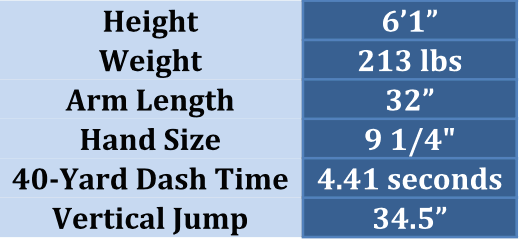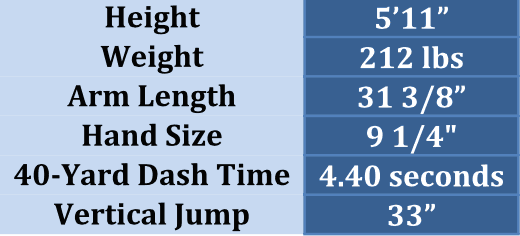Instant Analysis: Miller Time
It’s that time of year again, and the NFL’s free agency period is fully upon us. Owners in dynasty enter every offseason, pondering where their players with expiring contracts might wind up, and this week has answered many of those questions. I think I speak for everyone in the dynasty community when I say, one player in particular garnered more attention this off-season than most, and that player is Lamar Miller.
For those of you who have owned Miller since his rookie season, God bless your patient soul. For those of you who have bought in on his stock more recently, give yourselves a pat on the back, and thank the fantasy high heavens for the news that had many of jumping for joy—Miller to the Texans! Really, though, most of us were just hoping he’d escape Miami after being insultingly and inexcusably underused for four consecutive seasons since entering the league.
One thing I like to do when writing an article is lay a little groundwork. Just as it is important for a writer to understand his audience, I believe it is equally important for an audience to understand the author to help better understand his or her message. So, with that said, I will tell you that I own absolutely no Lamar Miller stock. I opted to write this piece because I knew I could offer an absolutely objective perspective, and with that, let’s continue…
[am4show have=’g1;’ guest_error=’sub_message’ user_error=’sub_message’ ]
It would be impossible for us to evaluate Miller in Houston without first evaluating Houston as a whole at this point of the off-season, and as I’m sure many of you already know, the Texans have already made significant strides since the free agency period opened this week. In reality, their progress began even before that. On March 3rd, the Texans released Arian Foster, creating an extra $6.625 million in cap space. It’s hard to say Foster’s been a “staple” of the Texans offense having only played two full NFL seasons in his career, but he’s racked up nearly 9,000 offensive yards in his seven years as a Texan, and he’s certainly been a focal point of the offense since breaking out in 2010.
If you watched the Texans play last year, then you had to be thinking their first and most significant need this off-season was at the quarterback position. However, once they cut ties with Foster, I’d argue their need at the running back position came pretty darn close. When it really comes down to it, as any offensive football mind will tell you, balance is vital to consistent offensive success. Rather surprisingly, the Texans managed to land Brock Osweiller in free agency. I’m not sure this solves their gaping hole at quarterback, but it certainly doesn’t hurt to put a guy at the helm that just experienced a Super Bowl championship run, and four NFL seasons under Peyton Manning’s tutelage.
Now, it doesn’t take long to think of another quarterback who spent four seasons with a future Hall of Fame quarterback teaching him the ropes only to prove he defined NFL medicority. Drum roll please… that’s right, Matt Cassel. Of course, Osweiller is four inches taller, and threw 650 more passes in college than Cassel, but no one in their right mind would argue that the jury isn’t still out on Osweiller. All that said, I feel the addition of Osweiller was a good one, and also allows the Texans to address other needs through the upcoming NFL Draft. I think Osweiller steps in and performs better than Hoyer from day one, and that the addition of Osweiller alone would have caused a slight up-tick in production on the offensive end for Houston.
But, the Texans didn’t stop there, did they?
Houston made a giant splash this week in signing running back, Lamar Miller, to a four-year contract worth about $6.5 million annually with $14 million guaranteed. The deal is actually quite comparable to the one Doug Martin received from Tampa Bay, only the Buccaneers signed Martin (who is two years older).
So, as you’re all wondering, what does this mean to Miller’s fantasy value moving forward?
In his time in Miami, Lamar Miller never topped 220 carries in a single season, and only carried the rock more than 200 times in a season once despite averaging 4.6 yards per carry throughout his NFL career thus far, and having carried the ball 227 times in 2011 as a Sophomore in college for the Miami Hurricanes while averaging 5.6 yards per carry. The argument that Lamar Miller cannot be a three-down back in the NFL is downright comedic. He is an explosive playmaker, who posted a 4.40 40-yard-dash at the 2011 NFL Combine. What’s that you say; he lacks size? Check that, his measurables from the 2011 NFL Combine are the exact same as DeMarco Murray’s from the 2010 NFL Combine.
Let’s compare:
DeMarco Murray

Lamar Miller

Pretty interesting, right? The knock on Murray was never that he didn’t have the size to be a three-down back in the NFL. The knock on Murray was that he was too much an upright runner. The only thing Lamar Miller has been lacking has been the opportunity to prove it in the NFL—an opportunity that Murray got, and just look what he did with it.
Since Miller entered the league in 2012, the Dolphins have ranked 14th (2012), 29th (2013), 22nd (2014), and 32nd (2015) in the league in rushing attempts, an average rank of 24.25 in the NFL over the course of Miller’s career. Over that same span of time, the Texans have ranked 4th (2012), 22nd (2013), 1st (2014), and 5th (2015), an average rank of 8th in the NFL. Oh, and in 2013, Arian Foster played only eight games, and the team went 2-14.
Since 2012, the Miami Dolphins averaged 383 rushing attempts per season. The Houston Texans, on the other hand, have averaged 486.25 rushing attempts per season since 2012. That boils down to a difference of nearly 6.5 carries per game. This is very good news for Lamar Miller owners. In 2014, when Lamar Miller received the most carries he’s posted in his NFL career (216), he also posted his highest yards per carry average (5.1). Over the past three seasons, Lamar Miller has regrettably, due mostly to coaching, averaged just 195.66 rushing attempts per season.
Even if his yards per carry remains around his career average, and his workload only increases by 25%, Miller will be looking at 1,100 + rushing yards in 2016. And, let’s not forget that Miller is a very capable receiver out of the backfield. Personally, barring injury, I’m predicting Miller sees at least a 33% increase in workload with the Texans this season (which I believe is the reason he was lured to Houston in the first place), and I believe that his yards per carry will be closer to 5.0 than his career average thus far, running behind a better offensive line on a team that is traditionally run-first. If he sees his workload increase by 33% while averaging 4.8 yards per carry this season, Miller will run for just about 1,250 yards—and believe me, the scores will come.
Unfortunately, Miller just got very difficult to obtain for a reasonable price in dynasty. Owners who have held onto him since his rookie season likely have a death-grip on the soon-to-be 25-year-old back, and those who have recently bought in are now looking forward the fruits of their labor like a 5-year-old looks forward to Christmas morning. I expect big things from Lamar Miller in 2016, and would not be surprised one bit if he exceeded even my lofty projections above. As soon as I update my rankings, I will have Miller firmly rooted as an RB1 for the upcoming season, and believe he will remain there for the next three seasons. So, for dynasty purposes, Miller is a fantastic guy to own now that he will be getting the opportunity he has long deserved.
[/am4show]
- Rookie Draft Picks and Trade Value: How to Value the 1.03 - March 2, 2017
- Rookie Draft Picks and Trade Value: How to Value the 1.02 - February 15, 2017
- Rookie Draft Picks and Trade Value: How to Value the 1.01 - February 7, 2017

































































